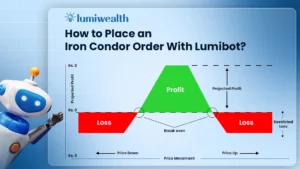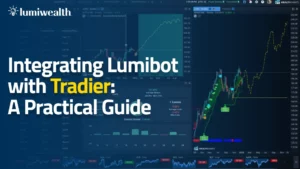Algorithmic trading, sometimes referred to as algo trading, is an automated trading process that uses algorithms and computer programs to identify trading opportunities and make decisions based on pre-set criteria. This form of trading has been used by hedge funds and other institutional investors for decades, but with the rise of new technologies and tools, it’s now accessible to all types of traders. In this blog, we’ll explore how hedge funds leverage algorithmic trading with Python and what strategies they’re using to maximize profits.
What is Algorithmic Trading?
Algorithmic trading, also known as algo trading or automated trading, is a method of executing trades using pre-programmed trading instructions. Algorithmic trading systems are designed to scan the markets for trading opportunities, identify entry and exit points, and execute the orders automatically. This type of trading is used by hedge funds and other institutional investors to maximize profits and reduce risk.
The algorithms used in algorithmic trading are based on a variety of factors, including price, volume, and market sentiment. Algorithmic trading systems can be programmed to take into account multiple factors when executing a trade. Algorithmic trading is used to take advantage of short-term price movements, as well as long-term trends.
The main benefit of using algorithmic trading is that it’s fast and efficient. By using algorithms, traders are able to capitalize on opportunities quickly and without having to constantly monitor the markets. This makes it easier to capture profits and minimize losses. Algorithmic trading is also more reliable than manual trading, as it eliminates the possibility of human error.
The Benefits of Algorithmic Trading
Algorithmic trading is becoming increasingly popular with hedge funds and other institutional investors due to its many benefits. It eliminates the need for manual trading, which can be time-consuming and prone to errors. By using algorithms, traders can quickly identify trading opportunities and make decisions based on pre-set criteria.
Algorithmic trading also allows for faster execution of trades. This is important for day traders, who need to complete orders quickly in order to capitalize on short-term price movements. Algorithmic trading can also help traders to manage risk more effectively, as it can be programmed to take into account a variety of factors when executing trades.
Finally, algorithmic trading can help to reduce costs. By eliminating manual trading, traders can save on commissions and other fees associated with manual trading. It can also help to reduce the amount of time spent researching markets, which can save on labor costs.
How Hedge Funds Leverage Algorithmic Trading
Hedge funds have long been using algorithmic trading to maximize profits and reduce risk. Hedge funds leverage algorithmic trading to capitalize on short-term price movements, as well as long-term trends. They use algorithms to identify trading opportunities and make decisions based on pre-set criteria.
Hedge funds use a variety of strategies when leveraging algorithmic trading, such as market making, trend following, arbitrage, and statistical arbitrage. Market making involves taking both a buy and sell position in a security in order to profit from the spread between the two prices. Trend following involves taking a position in a security when its price is trending in a certain direction. Arbitrage involves taking advantage of price discrepancies between two or more markets. Finally, statistical arbitrage involves taking advantage of price differences between two or more securities caused by market inefficiencies.
Hedge funds also use algorithmic trading to manage risk. By using algorithms, they can take into account a variety of factors when executing trades, such as price, volume, and market sentiment. This allows them to reduce the risk of losses due to market fluctuations or human error.
What is Python and What Can It Do for Algorithmic Trading?
Python is a popular programming language that is used for a variety of applications, including algorithmic trading. Python is an easy-to-learn language that is ideal for algorithmic trading due to its powerful libraries and tools. It allows traders to quickly create and test trading strategies, as well as automate the trading process.
Python can also be used to backtest trading strategies. This involves running a trading strategy through historical data in order to test its performance. Backtesting allows traders to determine if a strategy works as expected and to identify any potential issues. Python also has a variety of libraries and tools that can be used to analyze market data and identify trading opportunities.
Building an Algorithmic Trading Strategy with Python
Creating an algorithmic trading strategy with Python is relatively straightforward. First, traders need to identify the type of strategy they want to use. This could involve market making, trend following, arbitrage, or statistical arbitrage. Once the strategy has been identified, traders can begin to build the trading algorithm.
Traders can either code the algorithm themselves or use a library such as Zipline to create the algorithm. Zipline is an open-source algorithmic trading library that allows traders to quickly create and test trading strategies. Zipline also offers a variety of tools that can be used to analyze market data and identify trading opportunities.
Once the algorithm is built, traders can then backtest it using historical data in order to test its performance. If the backtest is successful, the algorithm can be deployed in the live markets.
How to Choose the Best Algorithmic Trading Strategy
Choosing the best algorithmic trading strategy can be a tricky process. There are a variety of strategies that can be used, and each one has its own benefits and drawbacks. To choose the best strategy, traders should consider their risk tolerance and objectives.
For example, if traders are looking to capitalize on short-term price movements, then trend following or market making strategies may be the best option. If traders are looking to take advantage of long-term trends, then arbitrage or statistical arbitrage strategies may be the best option. Ultimately, traders should choose a strategy that fits their risk tolerance and objectives.
The Best Automated Trading Strategies
There are a variety of automated trading strategies that can be used, each with its own benefits and drawbacks. Some of the most popular strategies include trend following, market making, arbitrage, and statistical arbitrage.
Trend following strategies involve taking a position in a security when its price is trending in a certain direction. Market making strategies involve taking both a buy and sell position in a security in order to profit from the spread between the two prices. Arbitrage strategies involve taking advantage of price discrepancies between two or more markets. Finally, statistical arbitrage strategies involve taking advantage of price differences between two or more securities caused by market inefficiencies.
Best Practices for Implementing Algorithmic Trading Strategies
Once an algorithmic trading strategy has been chosen, there are a few best practices that should be followed when implementing it.
First, traders should test their strategies using backtesting and paper trading. Backtesting involves running a trading strategy through historical data in order to test its performance. Paper trading involves simulating a trading strategy using virtual money in order to test its performance. By testing the strategy using backtesting and paper trading, traders can ensure that it works as expected and identify any potential issues.
Second, traders should use risk management tools to manage their risk. This includes setting stop losses and take profits, as well as using leverage in order to maximize profits while minimizing risk.
Third, traders should monitor the markets closely and adjust their strategies as needed. This involves monitoring the markets for trading opportunities and adjusting the trading algorithm as needed in order to capitalize on these opportunities.
Finally, traders should use a reliable trading platform. This will ensure that orders are executed quickly and accurately, as well as provide access to a variety of tools that can be used to analyze market data and identify trading opportunities.
Courses for Becoming an Algorithmic Trading Strategist
If you’re interested in becoming an algorithmic trading strategist, there are a variety of courses available online. These courses range from beginner to advanced and teach you everything you need to know about algorithmic trading strategies and how to implement them in the live markets.
The courses typically cover topics such as backtesting, trading strategies, risk management, market analysis, and more. They also provide hands-on experience by allowing you to build and test an algorithmic trading strategy using Python.
Conclusion
Algorithmic trading is becoming increasingly popular with hedge funds and other institutional investors due to its many benefits. It eliminates the need for manual trading, which can be time-consuming and prone to errors. By using algorithms, traders can quickly identify trading opportunities and make decisions based on pre-set criteria.
Python is a popular programming language that is used for a variety of applications, including algorithmic trading. Python is an easy-to-learn language that is ideal for algorithmic trading due to its powerful libraries and tools. It allows traders to quickly create and test trading strategies, as well as automate the trading process.
There are a variety of automated trading strategies that can be used, each with its own benefits and drawbacks. When choosing an algorithmic trading strategy, traders should consider their risk tolerance and objectives. Once the strategy has been chosen, traders should test it using backtesting and paper trading, as well as use risk management tools to manage their risk.
If you’re interested in becoming an algorithmic trading strategist, there are a variety of courses available online. These courses range from beginner to advanced and teach you everything you need to know about algorithmic trading strategies and how to implement them in the live markets.




